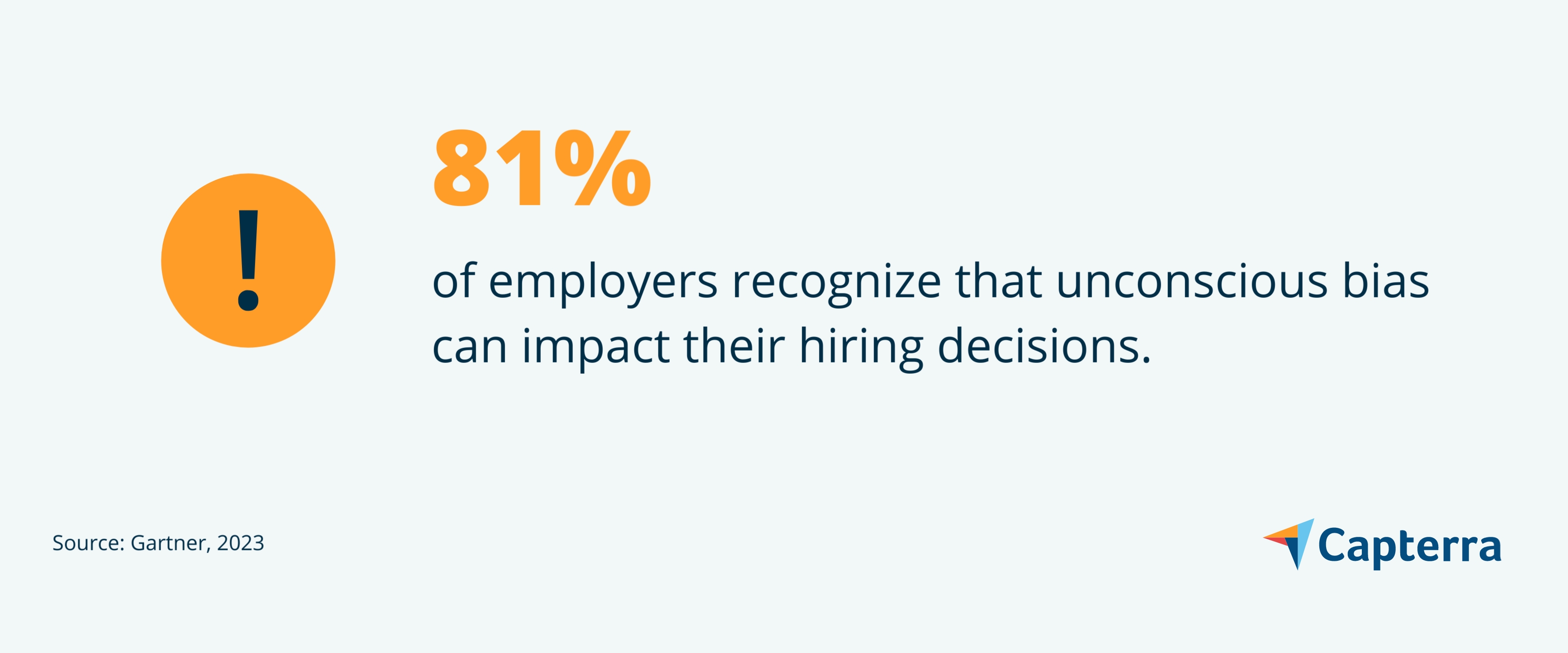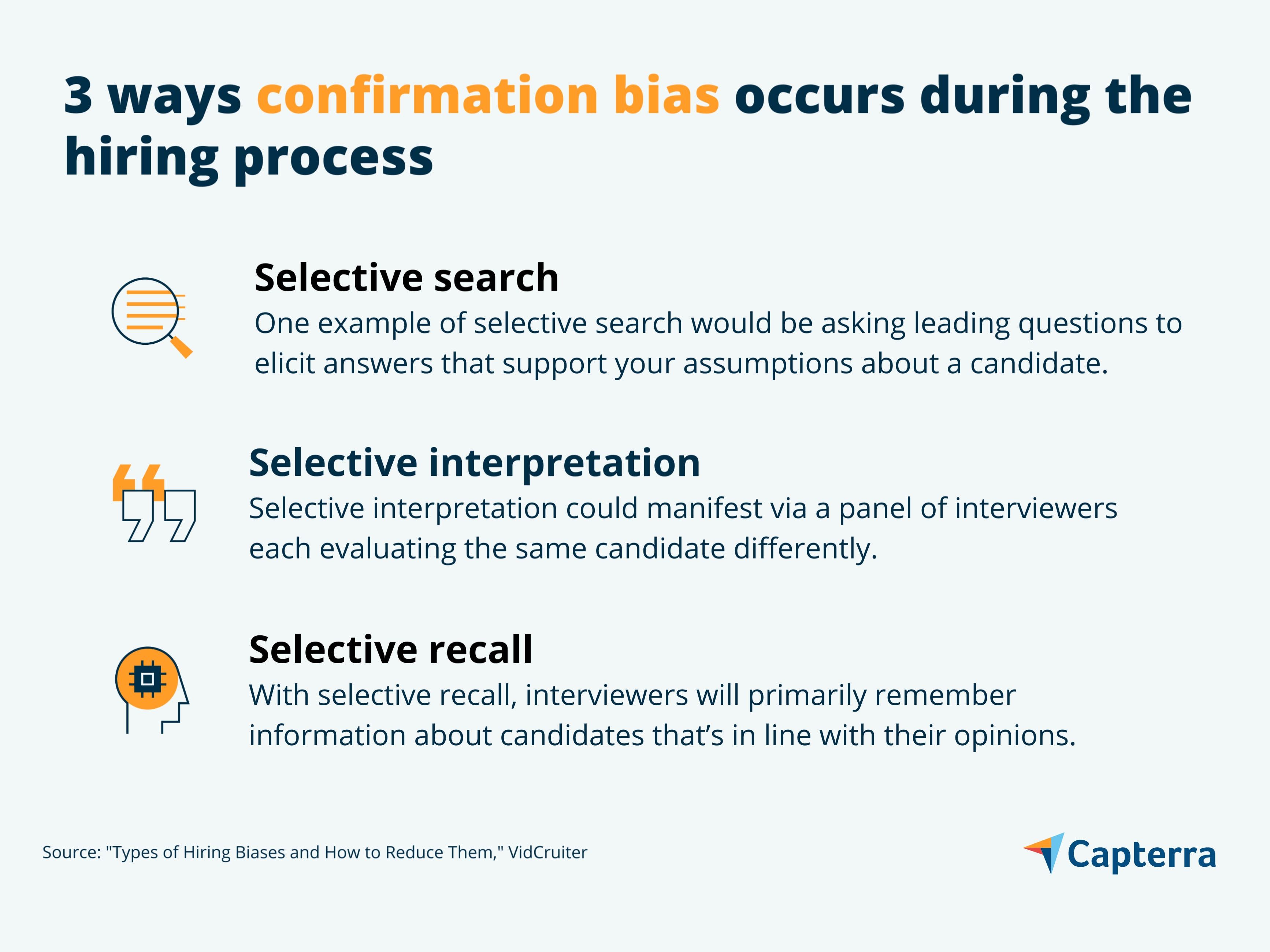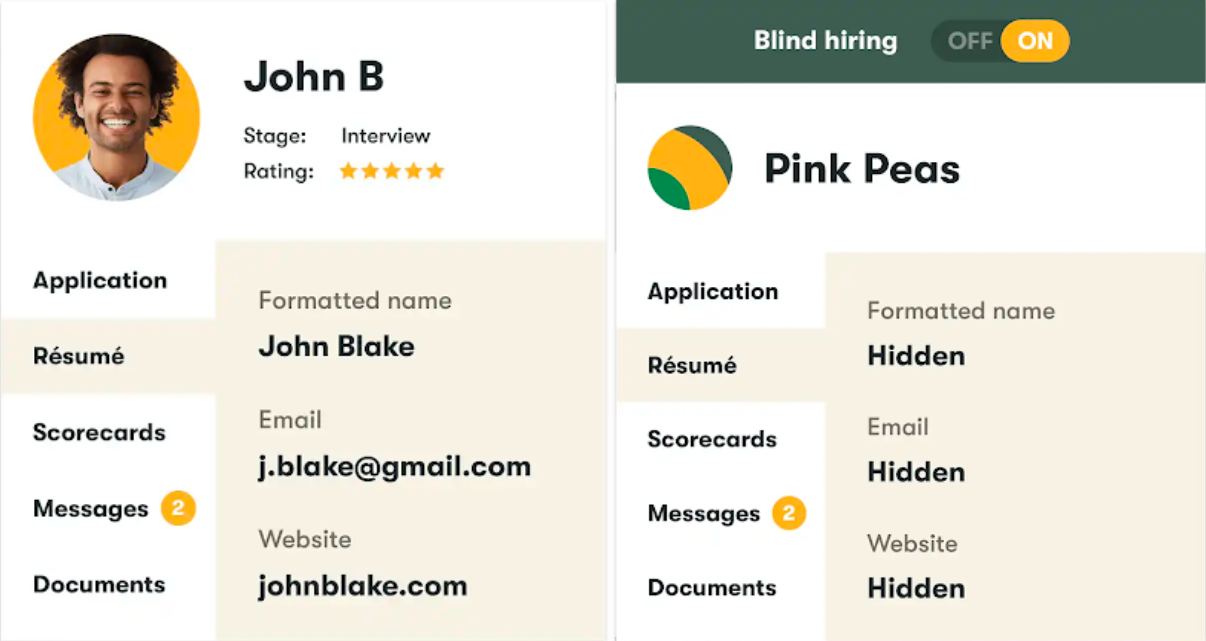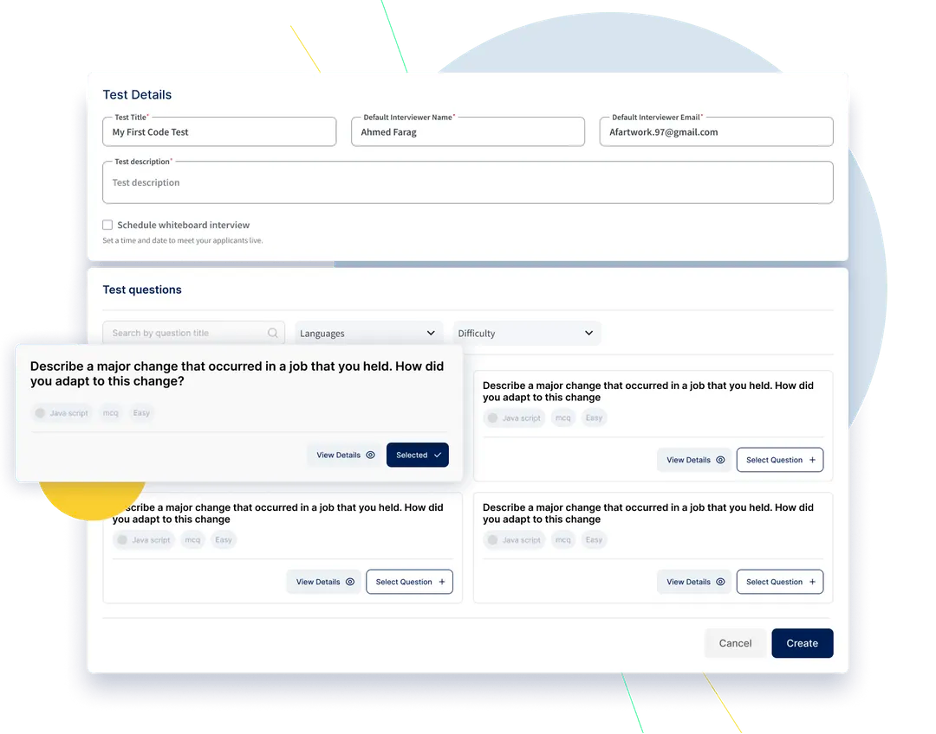The journey toward a diverse workforce starts with an unbiased recruiting process.
If you’re having trouble attracting and retaining underrepresented talent, you’re not alone. In today’s competitive talent market, turnover is high among all employees, but diverse and underrepresented talent are leaving their organizations at even higher rates[1].
Most businesses focus on improving the talent acquisition process to advance DEI outcomes, but recruiting leaders need to take it a step further to identify and address unconscious bias within their recruiting processes. By doing this, you’ll be able to prepare hiring managers at your organization to make more inclusive hiring decisions that drive employee satisfaction and retention.
We analyzed Gartner research and spoke to Jen Davidson, the Diversity, Equity and Inclusion Expert at Kingsley Napley[2] to inform this explanatory guide. Ahead, we’ll cover what you need to know about hiring biases in order to proactively address them and improve your business’s efforts to create a diverse and inclusive workforce.
What is hiring bias?
Hiring bias is a feeling, judgment, or inclination toward a candidate throughout any point in the recruiting process, from screening resumes to conducting interviews. Hiring bias can be based on individual experiences, social and cultural influences, education, religion, and upbringing amongst many other things. To share an example from Gartner[3]:
“A hiring manager may vouch for a candidate based on shared school affiliations, on proximity to their hometowns or another shared identity trait, such as interest in the same sport.”
In short: Biases are the result of unconscious mental shortcuts recruiters and hiring managers take to make hiring decisions that favor one person or group to the detriment of others.
Why should recruiting leaders address hiring bias?
Diversity is good for business—and yet, many organizations fail to effectively propel DEI efforts forward.
Less than half of HR leaders are confident in their organizations’ ability to create accountability measures for diversity, equity and inclusion (DEI) outcomes[1]. And employees from underrepresented talentFurther, despite the fact that more than three out of four job seekers and employees (76%) feel that a diverse workforce is an important factor when evaluating companies and job offers[5], the majority of employers still let unconscious biases affect their hiring decisions:

It’s the causality dilemma: Attracting underrepresented and diverse talent to your organization requires exemplifying a culture and workforce that these individuals can see themselves within. Meaning, if you don’t have underrepresented talent in key roles (or in any roles), you’re going to have a much harder time attracting diverse talent to your organization.
Davidson makes the point that if no one is attracted to your organization from a diversity perspective, it typically comes down to your employer branding and EVP (employee value proposition).
“It can be things like the visuals on your website—how much does somebody see themselves working for you? Do they understand what the culture is like? Does it feel tokenistic or not?”
Davidson goes on to suggest that organizations start the process of improving their diversity efforts by analyzing applicant data. This will help you determine whether attraction is truly your problem.
/ Tech tip
Analyze the demographics of your organization’s job candidates with an applicant tracking system (ATS) or recruiting platform.
Oftentimes, this isn’t the real problem for businesses—and that’s why identifying biases in your hiring process is a crucial task.
“If the diversity is coming, then it's a case of looking at the rest of your process. And often it is coming, and actually, we're filtering it out during the different process points that we have.”


Jen Davidson
Diversity, equity and inclusion expert at Kingsley Napley
What are the different types of hiring bias?
Ahead, we’ve outlined three common types of biases that can impact a hiring decision. It’s worth noting that this isn’t a comprehensive list—instead, we’re focusing on mitigable types of discrimination that are most likely to lead to a biased hiring decision.
1. Biases based on demographics
Biases based on demographics occur because of observations made about an individual's personal characteristics. All of the following fall into this category of biases:
Age bias: Also called generational bias, this occurs when assumptions are made about an applicant based on their actual or presumed age. Avoid using language in a job description that hints at a certain age group (such as “recent college graduates” or “experienced professionals”) as this can prevent candidates who don’t fit that profile but are otherwise qualified from applying to the role.
Race and ethnicity bias: While race is typically associated with physical characteristics such as skin color and hair texture, ethnicity is more connected to cultural expression. Both can be used to make an unfair judgment about a candidate. Racial discrimination has long been a problem in recruiting. As recently as 2020, only 10% of CEO roles were held by Black or historically underrepresented ethnic executives, despite considerably higher levels of representation on the front line[4]. Name bias, which occurs when an assumption about a candidate’s race or ethnicity is made based on their name alone, is another example of this kind of bias.
Gender bias: Assumptions made about a person’s capabilities based on their gender also fall into this category of biases. As gender becomes an even more nuanced topic, this kind of bias is becoming more prevalent: Around 49% of transgender employees reported workplace discrimination (either being fired or not hired) based on their LGBT status[6].
/ You might like
Sexual orientation bias: Despite the fact that a person’s sexual orientation has nothing to do with how well they can perform on the job, individuals who belong to the LGBTQ+ community may still experience this kind of bias. For example, 20% of LGBTQ+ employees have been told they should dress in a more masculine or feminine manner at work[7].
Use blind hiring to mitigate biases based on demographics:
Increasing your awareness of biases based on demographics is a great place to start. However, in order to avoid implicit biasBlind hiring anonymizes applicants by removing personal and demographic information (such as their name and gender) from their candidate profile. This tactic helps hiring teams assess applicants based exclusively on their experience and skills, and fortunately, many recruiting tools and applicant tracking systems offer this feature.
2. Affinity bias
Affinity bias (sometimes called commonality bias or similarity bias) occurs when a member of a hiring team feels a preference toward a candidate that they have something in common with. There are many things that can cause an interviewer to feel affinity bias; for example, the interviewee may remind them of a friend or reveal that they grew up in the same area as the interviewer.
Related, in-group bias is another concept closely tied to affinity bias that refers to the tendency for hiring teams to give preferential treatment to candidates that they perceive to be members of their own “groups.” One example of in-group favoritism would be an interviewer preferring a candidate who is a fan of the same soccer team as they are.
While it’s natural for humans to seek common ground with others to connect over, affinity bias is the antithesis of diversity. When affinity bias creeps into hiring decisions, a candidate’s skills aren’t given the same weight as their personality or “cultural fit,” which can lead to making a less-qualified hire, and down the road, a more homogenous workforce that lacks the power of thought diversityUse skills assessments to curb affinity bias:
Davidson points out that hiring teams who want to avoid affinity bias affecting their decisions need to define and agree on the skills they’re looking for in a candidate before the recruiting process begins.
“If you're not sure what you're trying to assess, then everybody tends to come at it from a different way—and that’s when the bias can come out.”
As a best practice, the first step a hiring team should take when tasked with filling a role is to identify and document the hard and soft skills they’re looking for in a candidate. Then, decide which competencies can realistically be measured through an interview.
Using skills assessments to test candidates’ capabilities is one way to minimize the effect of bias on decision making. Skills assessments come in all forms; they can be copywriting assignments designed to judge grammar proficiency, programming problems that test candidates’ creative thinking skills, or customer service scenarios that force applicants to quickly decide the best way to navigate a situation.
“It all comes back to designing the job effectively and knowing what it is you're recruiting against so that when you get to the testing, you're saying, ‘Okay, but have they demonstrated the things that we're looking for?’ If you haven't got that in place, it's all open for interpretation.”
Jen Davidson
3. Confirmation bias
Confirmation bias occurs when an interviewer makes an assumption (either negative or positive) about a candidate and then selectively searches for evidence that supports that assumption. Confirmation bias usually happens subconsciously, but it can still cause an interviewer to alter their behavior or questioning style in an attempt to verify they’re right.

Confirmation bias leads to false perspectives, because it only accounts for information that supports one’s own beliefs. And as Davidson points out, an interviewer’ job is not actually to make judgments:
“Your job is to almost document what it is they're saying. You've already done the thinking first (defining your criteria), and you're looking at the evidence, you're looking at the criteria, and you're saying, ‘Do they meet the criteria?’ You're scoring them as best you can.”
Use a structured interview process to avoid confirmation bias:
Having a structured interview process is a must to minimize confirmation bias. Structured interviews are designed so that during the recruiting process every candidate has a chance to meet the same people and answer the same interview questions. Great structured interview processes even include a scoring system with examples of potential candidate answers at each level so that it's simple and straightforward to compare applicants to one another.
Structuring your interview process reduces the likelihood of interviewers asking leading questions or going “off-script.” As Davidson says, “...an evidence-based, objective approach tends to be the way I’d advise for inclusive assessment.”
If you don’t already use a structured interview approach, download our free worksheet below for guidance with the process.
More resources for the journey toward a diverse, inclusive workplace
“DEI has been shown to drive better business outcomes. In today’s uncertain economic conditions, organizations cannot afford to neglect these business benefits.”[1]
If you want to start reaping the benefits of a diverse workforce, you have to adjust your hiring practices to account for unconscious biases. Hiring biases can have a significant impact on your organization’s talent pool, with 48% of candidates saying they experience at least one form of bias in their application process[10].
Use the information in this guide to address and proactively prevent biases from creeping into your team’s hiring decisions. And if you’re looking for additional resources related to this topic, there’s more to discover on our blog:
Plus, pick up four tips for creating an equitable hiring process from this super-short video:



